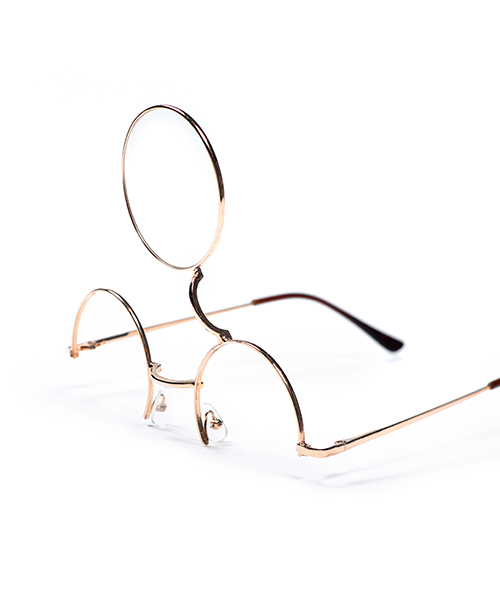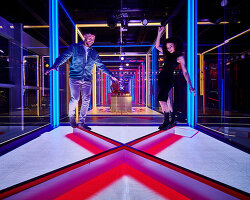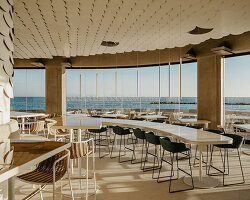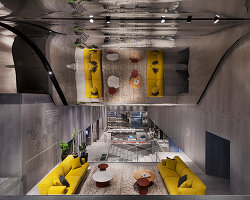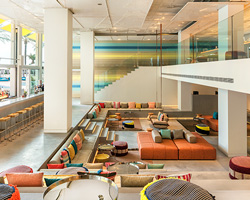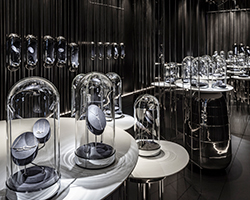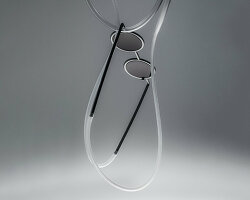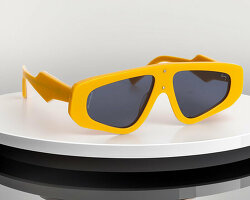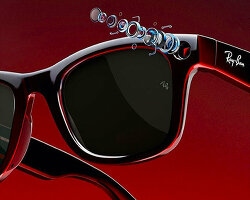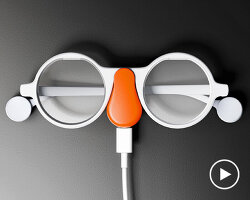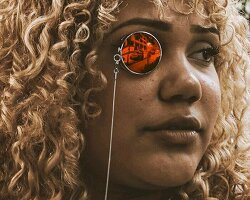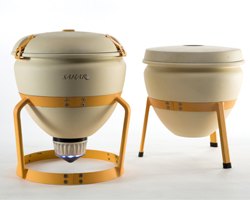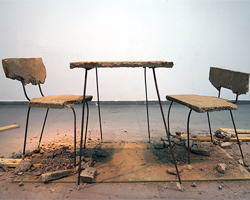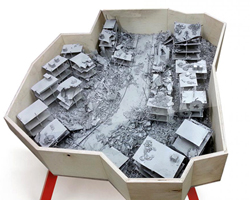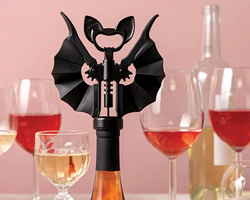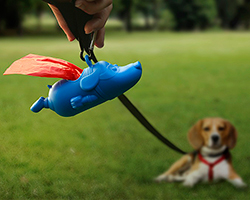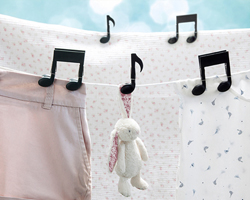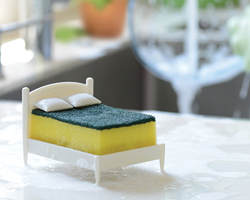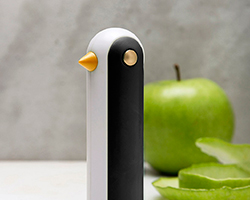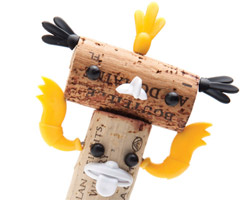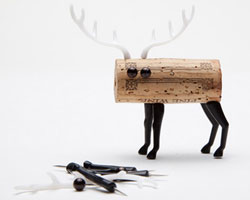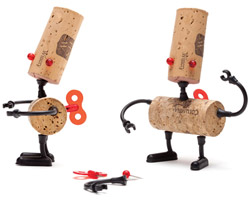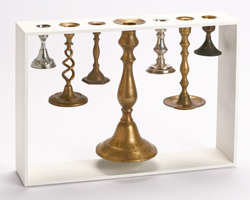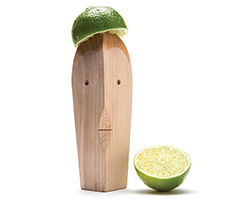currently on show at design museum holon, ‘overview’ is an exhibition that displays in one place the vast collection of optometrist claude samuel. running until april 29th 2017, the exhibition includes over 400 rare items, representing eyewear from every stratus of history: from the 17th century, to modern day and forwards to VR and the speculative future of eyewear.
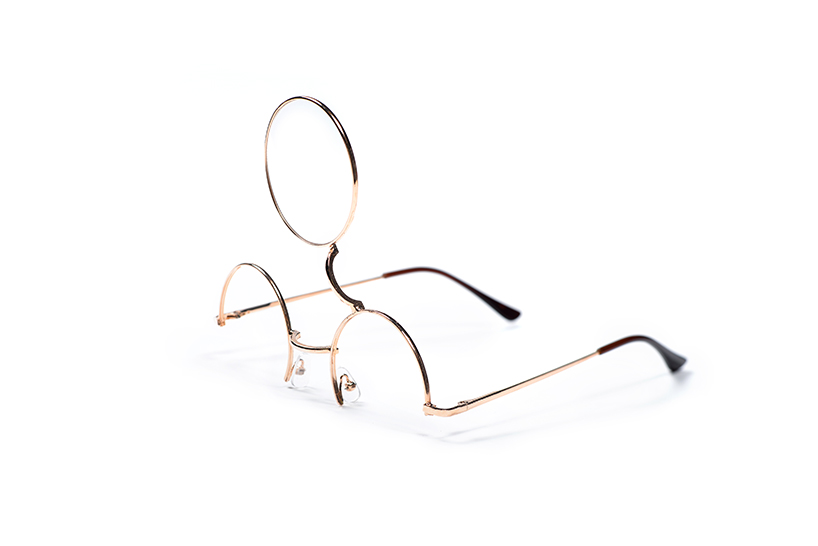
OTOTO imagines a pair of eyeglasses equipped with an extra lens for the spiritual third eye
all images by shay ben efraim
to compliment the exhibition, design museum holon tasked 40 israeli designers with offering their own spin on the optical devices, posing the question, ‘what are eyeglasses?’ the resulting concepts combine with samuel’s extensive collection to realize a thorough investigation into the history of eyewear, what spawned the invention, its function in society today and advancements forthcoming in the field.
standout products from the more historical collection include a pair of eskimo snow goggles carved from bone, steampunk style spectacles and ornate operatic lenses. also included are a series of sketches by samuel’s father for the pierre cardin fashion house.
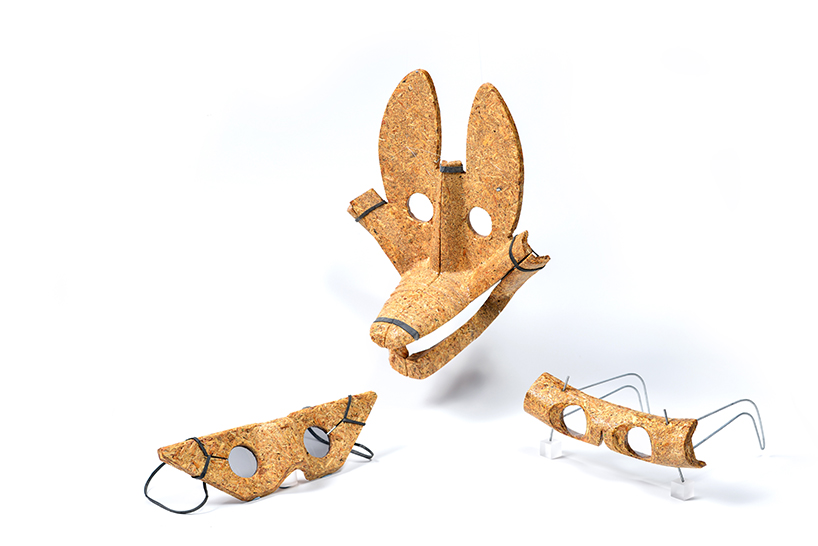
yaacov kaufman‘s interpretation of the museum’s commission corresponds with human evolution
where things get interesting however, are in the designer’s responses to the museum’s challenge. ‘the 3rd eye’ by OTOTO imagines a pair of eyeglasses equipped with an extra lens for the spiritual ‘third’ eye, traditionally located in the center of the forehead. according to the designer, the pair would allow wearers to see ‘even when vision is vague and find the way even when there is a sense that it is lost’.
accompanying these conceptual designs are academic essays, available on the design museum holon’s website, that take a more involved look at spectacles, their history and role in society. before glasses, those who found themselves near- or far-sighted were often forced into taking up certain roles or jobs in society: the far-sighted became shepherds or fishermen, while the near-sighted were more suited to positions as scribes or carpenters.
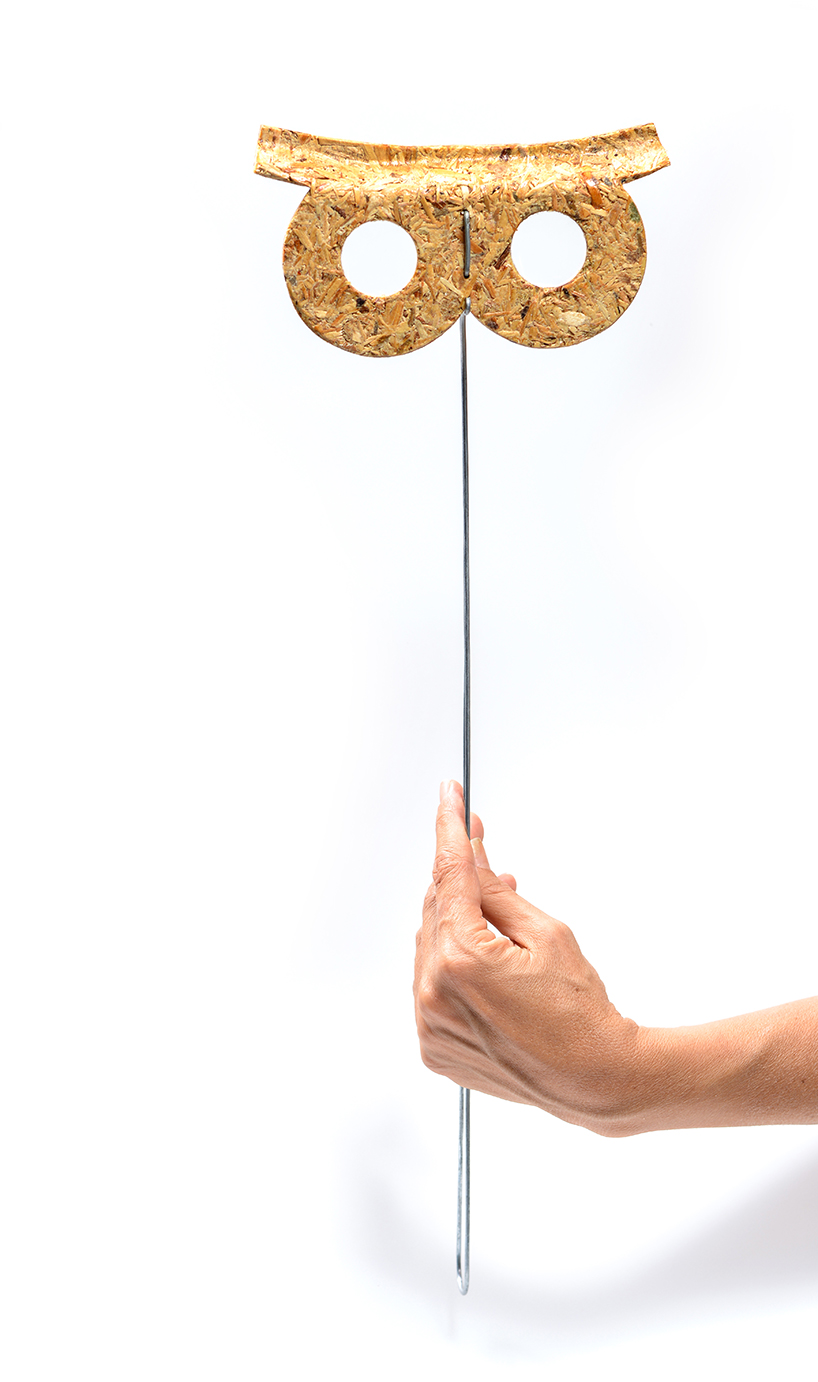
kaufman maps the journey of evolution from the minimal monocle to the fully developed fox head
‘the invention of eyeglasses took place in two phases: the first, toward the end of the thirteenth century, was based on the development of eyeglasses with convex-converging lenses, capable of correcting the problems of the farsighted; the second, in the mid-fifteenth century, involved the development of concave-diverging lenses, to correct the problem of myopia,’ explains tomás maldonado in his essay, ‘taking eyeglasses seriously.’ ‘but why, one immediately wonders, was it necessary to wait a century and a half for the progress from eyeglasses for the farsighted to those for the nearsighted? how can this long gap between the two events be explained?’
yaacov kaufman’s interpretation of the museum’s commission takes an unconventional stance on this gradual development of eyewear, and includes a series of masks and eye pieces that correspond with humankind’s own evolution. interpreting glasses as a mask that people wear in the day-to-day, kaufman maps the journey of evolution from the minimal monocle to the fully developed fox head — complete with pointed ears and grinning visage.
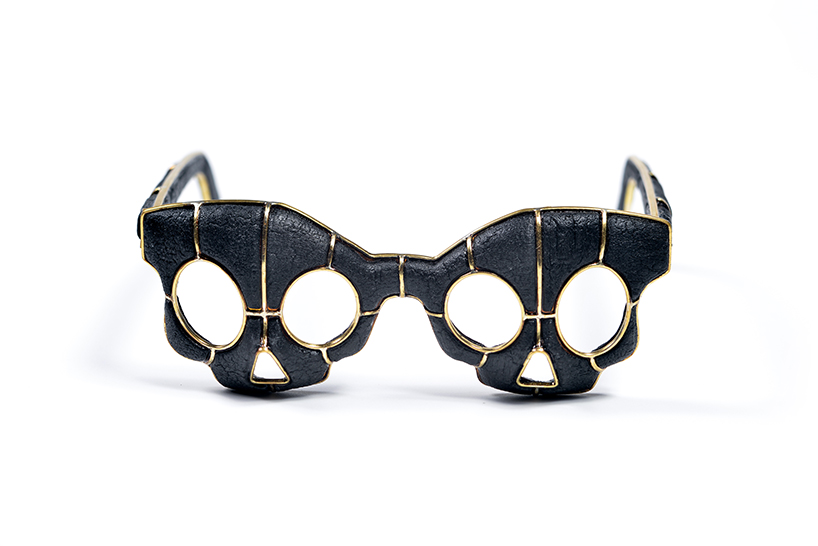
gregory larin imagines the frames as two grim skulls that come together to form a single image
in their essay ‘eyeglasses — between design and medicine’, jonathan ventura and galit shvo comment on the decorative aspect of each design, and remark on the incredible journey of glasses from a medical device to an essential component of personal style. ‘for whereas glasses have become an almost obligatory fashion accessory in certain professional milieus, those hard of hearing or speech are viewed as suffering from a disability or from a physical or medical problem’, the two comment. ‘moreover, in contrast to other medical products that can be more or less successfully concealed, glasses underscore a central part of our body – our face, and especially our eyes.’
fortifying this observation, ‘conjoined glasses’ by gregory larin lends a macabre, fantastical element to the headpiece by imaging the frames as two grim skulls that join together to form a single image. referencing the worlds of performance and the stage, the absent lenses remove the medial aspect outright, offering a variety of viewpoints to the wearer and inhibiting as much as facilitating the act of seeing.
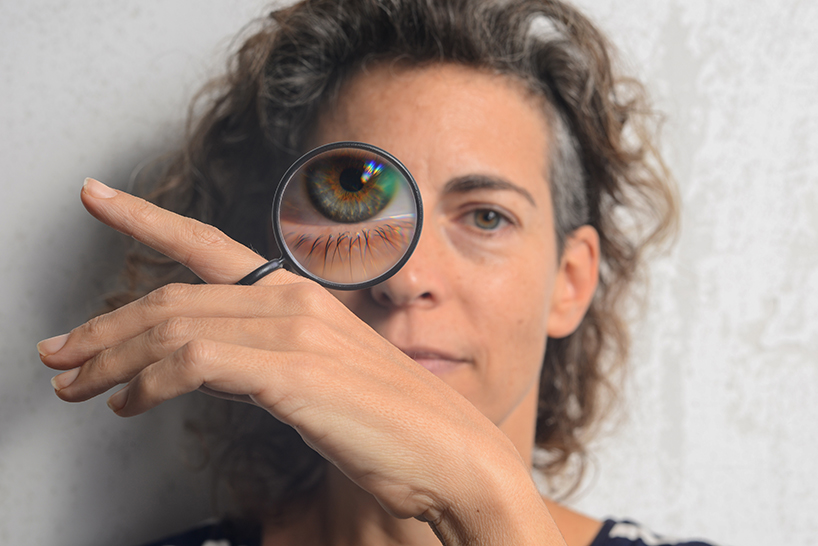
tal gur’s design suggest a new set of gestures associated with eyewear
tal gur plays on the more decorative aspect of eyeglasses, reinterpreting them as a piece of jewellery. worn on the finger like a ring, this concept plays with the glasses in relation to the body, and examines the various body parts that they could conceivably interact with. the concept also suggests a new set of motions not commonly associated with eyewear, new forms and gestures adding to a unique vocabulary of signage.
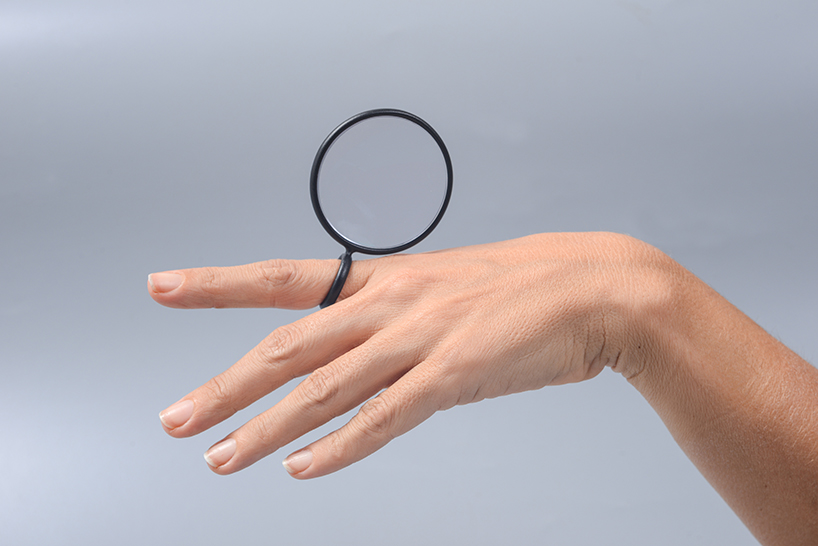
in many ways, glasses were the first example of wearable tech
because of their role in our everyday lives, eyeglasses are often considered primitive pieces of equipment — somewhere between the fork and the bicycle — whose use is so ubiquitous that, ironically, we tend to overlook them. in many ways however, glasses were the first example of wearable tech.
‘with the exception of the frame, which has changed over time in accordance with new historical developments in the production of materials, lenses have remained the focal point of all eyewear’, continue ventura and shvo. ‘the technology of lens production made this product appear simultaneously threatening and fascinating during the early renaissance, since it interfaces with the body and is carried on the face, causing us to almost forget its existence (until the glasses break or become dirty) – or, in other words, a wearable technology.’
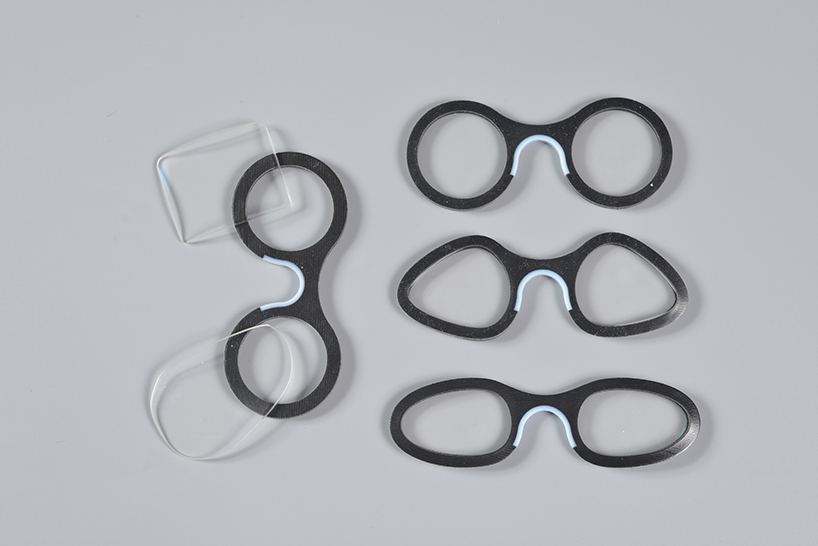
the ‘open glasses’ concept by baranowitz kronenberg pairs with an app to help you choose a style
tel aviv based architecture firm baranowitz kronenberg offered the ‘open glasses’ concept. created in collaboration with superproject, these specs combine with an interactive app that allows users to choose from a number of different frames, each defined by a particular cut, edge, tint or polish. accompanying the set is a silicone eye patch onto which each and every pair can be mounted.
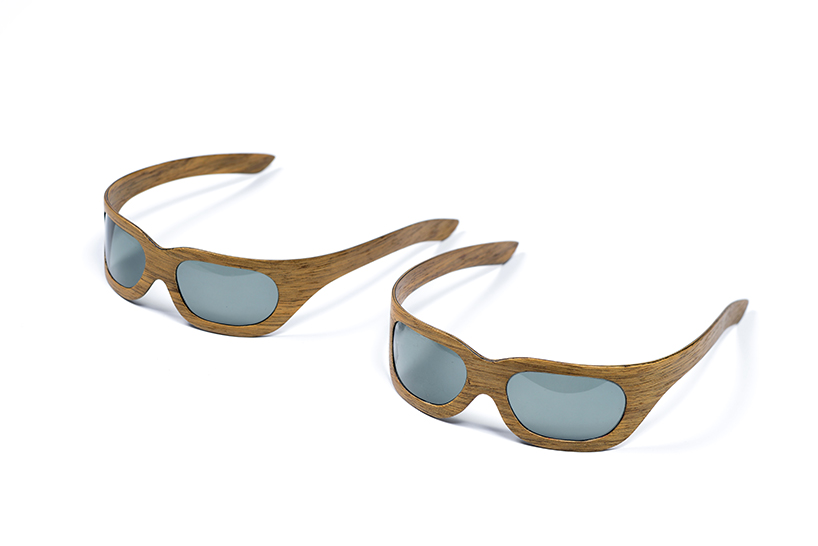
these glasses by ezri tarazi do away with a hinge in favour of a more durable, reinforced frame
ezri tarazi’s ‘carbon wood glasses’ are made by layer tree bark fused with carbon fiber. designed in 2005, the pair forgoes the tradition hinged sides in favour of a cohesive curved body, its laminated outside forming a single curve from the face to the sides of the head. the product’s high rigidity level reinforces the common secondary usage of sunglasses as hairband.
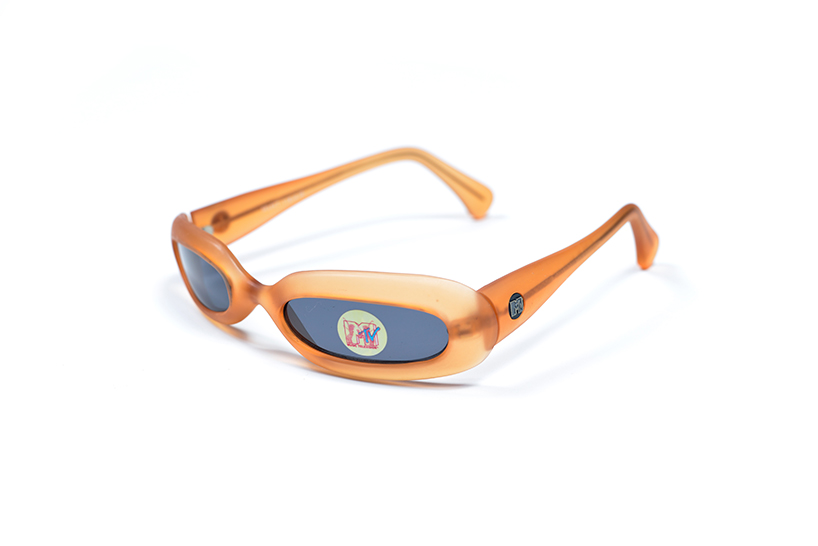
the bulky frame of these glasses responds to the deep-set nature of the human eye socket
pini leibovich‘s eyeglasses were created in 1988 in conjunction with MTV new york. aspiring to create a form more natural than absolutely geometrical, the asymmetrical glasses contain slight differences in shape depending on the eye. their bulky frame responds to the deep-set nature of the human eye socket: the frames protect the lenses in a similar way in which the skull protects the eyeball.
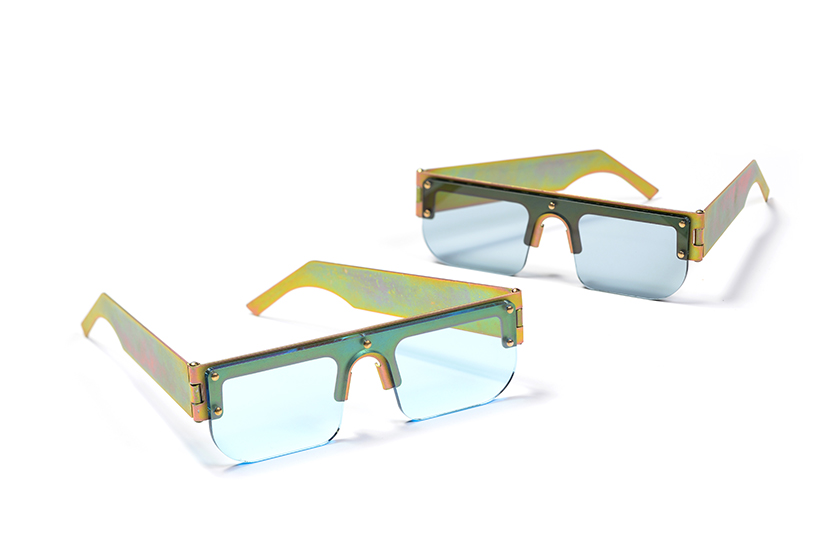
exposed materials, metallic pins and straight lines combine to realize an approach by reddish that is undeniably stylish
these glasses by reddish (idan friedman and naama steinbock) put the hinge front and center, turning their back on more fashionable elements in favour of a utilitarian, industrial approach. exposed materials, metallic pins and straight lines combine to realize a more technical approach that is both rudimentary and undeniably stylish.
you can find a full list of the designs exhibited as part of ‘overview’ on the museum’s website.
BARANOWITZ KRONENBERG ARCHITECTS (12)
EYEWEAR (84)
EZRI TARAZI (9)
OTOTO (12)
REDDISH STUDIO (7)
TAL GUR (5)
YAACOV KAUFMAN (13)
PRODUCT LIBRARY
a diverse digital database that acts as a valuable guide in gaining insight and information about a product directly from the manufacturer, and serves as a rich reference point in developing a project or scheme.
